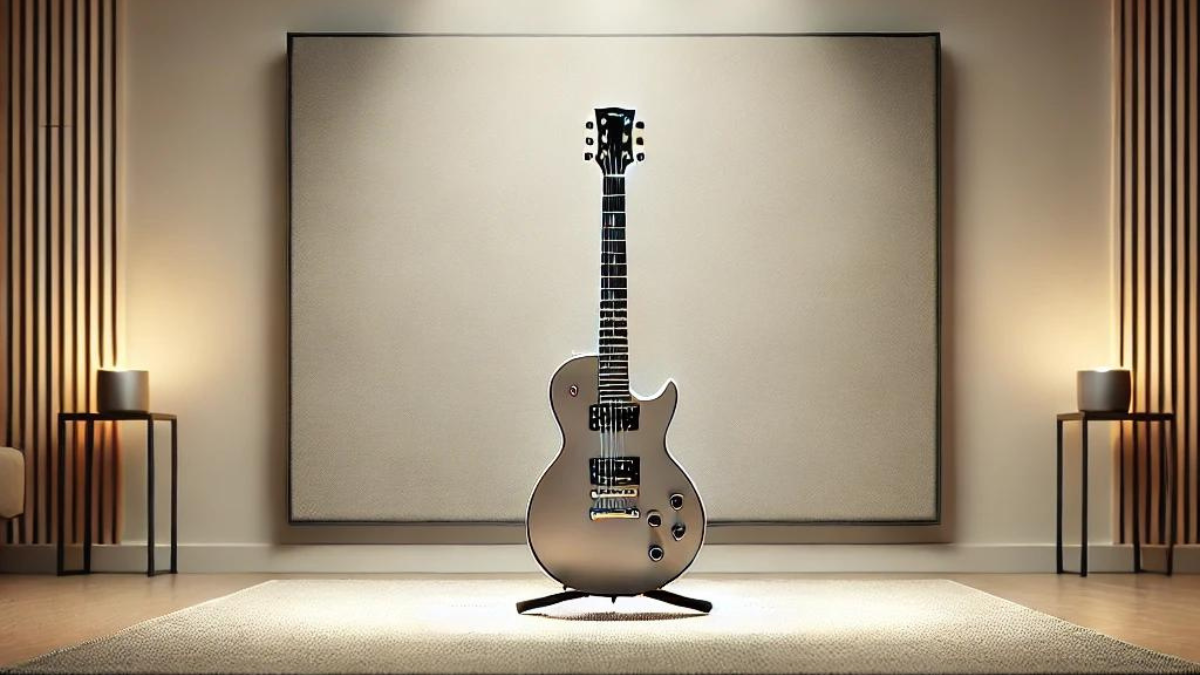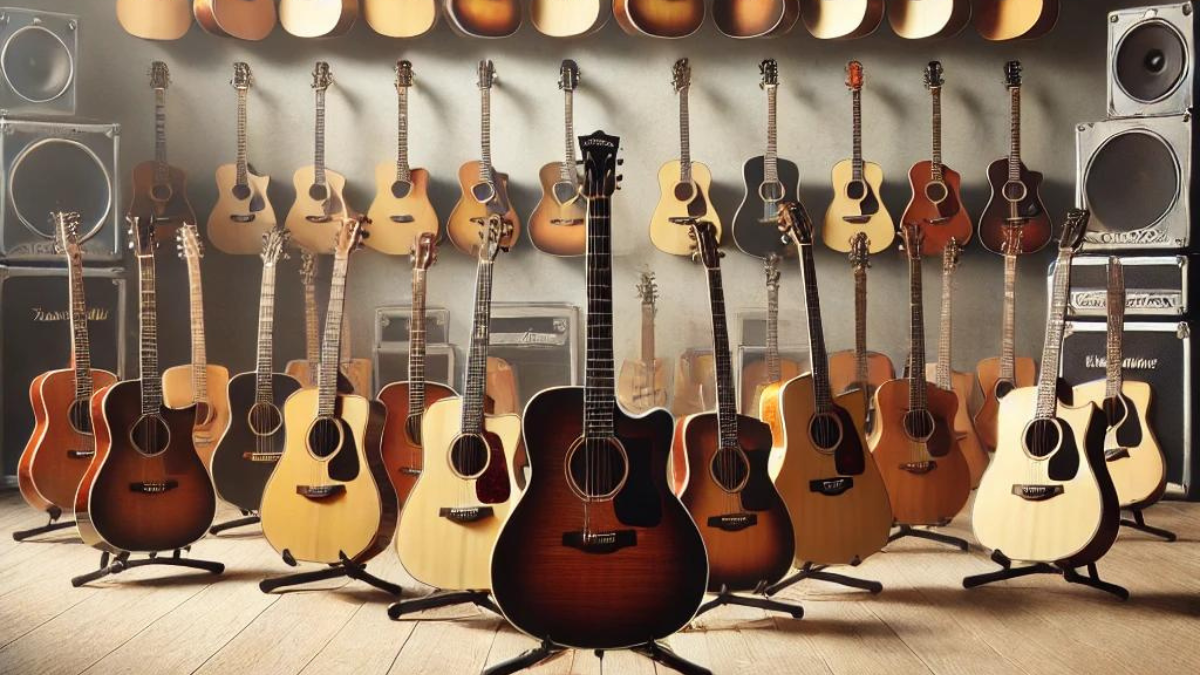Contents
- 1 10 Fascinating Facts About Who Invented the Electric Guitar: The Innovators Behind the Sound
- 1.1 Introduction
- 1.2 Who Invented the Electric Guitar? Exploring the Early Innovators
- 1.3 The Early Days of Guitars
- 1.4 The Birth of the Electric Guitar
- 1.5 The Role of Les Paul
- 1.6 Leo Fender and Mass Production
- 1.7 Types of Electric Guitars
- 1.8 The Impact on Music
- 1.9 Advances in Technology
- 1.10 Famous Guitar Models
- 1.11 Fender’s Influence
- 1.12 Electric Guitars in Culture
- 1.13 The Future of Electric Guitars
- 1.14 Common Myths
- 1.15 Conclusion
- 1.16 FAQs
- 1.17 Explore More About the History of the Electric Guitar
- 1.18 Discover More at Resonance Manor
10 Fascinating Facts About Who Invented the Electric Guitar: The Innovators Behind the Sound
Introduction
The electric guitar has revolutionized music, playing a key role in genres from rock to jazz. But the story of its invention is as intriguing as the instrument itself. This article explores the history of this groundbreaking instrument and the pioneers who made it possible. Understanding its origins is crucial to appreciating its impact on music.
Looking for the perfect guitar? Explore our comprehensive guide to the Best Electric Guitars of 2024 at Resonance Manor. Whether you’re a beginner or a seasoned pro, we’ve got the top picks to suit every style and budget!
Who Invented the Electric Guitar? Exploring the Early Innovators
Determining who first invented this instrument is complex, with contributions from multiple innovators. George Beauchamp and Adolph Rickenbacker are credited with developing the first commercially viable model in 1931, known as the “Frying Pan.” This lap steel guitar with a magnetic pickup marked a turning point in music history.
The “Frying Pan” was groundbreaking, leading to mass production and wider use of amplified guitars. This innovation paved the way for future developments and set the stage for other inventors, like Les Paul, to further refine and popularize the instrument.
The Early Days of Guitars
Before the rise of the electric guitar, acoustic versions were dominant. However, their sound was often too soft to compete in large venues or with louder instruments. This led to the early efforts to amplify guitars, setting the stage for the development of the electric version we know today.
The Birth of the Electric Guitar
The journey to amplifying the guitar began in the 1920s with initial experiments that focused on capturing and amplifying string vibrations. Musicians and engineers collaborated to create a louder, more versatile instrument. These efforts laid the foundation for the eventual creation of the electric guitar.
The Role of Les Paul
Les Paul is often celebrated for his contributions to the evolution of the electric guitar. A musician and inventor, he developed the solid-body design, which reduced feedback and increased sustain. His prototype, known as “The Log,” was crucial in shaping future designs.
Les Paul’s collaboration with Gibson Guitar Corporation resulted in the creation of the Gibson Les Paul, a model that remains iconic today. Introduced in 1952, it featured a solid body and dual humbucker pickups, producing a rich tone that became popular with musicians across various genres.
Leo Fender and Mass Production
While Les Paul was innovating with solid bodies, Leo Fender was making significant strides in mass production. Fender, an engineer, introduced the Fender Telecaster in 1950, the first mass-produced solid-body guitar. Its bright tone and durability made it a favorite among musicians.
Fender’s innovations continued with the Stratocaster in 1954, which featured a contoured body, three pickups, and a tremolo system. These designs revolutionized the guitar industry, making high-quality instruments accessible to a broader audience.
Types of Electric Guitars
Over time, different types of electric guitars have emerged, each with unique characteristics:
Solid Body: These guitars, like the Fender Telecaster, have no hollow spaces, reducing feedback and providing sustained sound. They are popular in rock and blues.
Hollow Body: Similar to acoustic guitars, these produce a warm tone suitable for jazz but are more prone to feedback.
Semi-Hollow Body: Combining features of both solid and hollow bodies, these guitars offer a balanced sound, with models like the Gibson ES-335 being widely used in various genres.
The Impact on Music
The electric guitar fundamentally altered music, especially with its adoption in jazz and later in rock and roll. It became a symbol of innovation and rebellion, with musicians like Chuck Berry and Elvis Presley pioneering new sounds that captivated audiences.
As music evolved, so did the electric guitar’s role. Legends like Jimi Hendrix and Eric Clapton pushed the instrument’s capabilities, creating sounds that defined entire genres. Its versatility has made it a staple in music ranging from punk rock to jazz fusion.
Advances in Technology
The electric guitar has benefited from technological advancements, including the development of pickups, amplification, and effects.
Pickups: From early single-coil pickups to modern humbuckers, innovations in this area have expanded the range of tones available to guitarists.
Amplification: Early amps were basic, but the introduction of tube and solid-state amps, as well as digital modeling, has allowed for precise sound shaping.
Effects: Reverb, delay, and overdrive effects have transformed the electric guitar’s sound, enabling musicians to create a vast array of sonic textures.
Famous Guitar Models
Certain models have become legendary due to their sound and association with iconic musicians:
Fender Stratocaster: Known for its versatile tone and ergonomic design, used by Jimi Hendrix and Eric Clapton.
Gibson Les Paul: Renowned for its warm tone and used by rock legends like Jimmy Page and Slash.
Fender Telecaster: A simple yet effective design that has been a favorite in country and rock music.
Fender’s Influence
Fender’s impact on music extends beyond its instruments. The company’s commitment to innovation and quality made electric guitars more accessible and affordable. Fender amps, known for their clean tones and reverb, also played a key role in shaping the guitar’s sound.
Today, Fender guitars remain popular with musicians of all levels, continuing to influence the sound of contemporary music.
Electric Guitars in Culture
The electric guitar is more than just a musical instrument; it has become a cultural icon. In the 1950s and 1960s, it symbolized the rebellious spirit of rock and roll. Musicians like The Beatles and Elvis Presley used it to create sounds that resonated with youth culture.
As music evolved, the electric guitar remained a symbol of artistic expression. Jimi Hendrix’s innovative playing techniques, for example, made the guitar a key part of the psychedelic era. Today, it continues to inspire new generations of musicians and remains a powerful symbol in popular culture.
The Future of Electric Guitars
As technology advances, the future of electric guitars looks promising. Digital technology is allowing for new sounds and styles, while customization and sustainable materials are becoming more prevalent. However, the challenge will be to balance these innovations with respect for the instrument’s history.
Despite these changes, the electric guitar’s essence remains the same. It continues to inspire musicians and will likely evolve further in ways we can only imagine.
Common Myths
Several myths surround the electric guitar’s history. One common misconception is that Les Paul was the sole inventor, while in reality, the development involved multiple innovators. Another myth is that the electric guitar was an instant success, whereas it actually faced resistance in its early years.
Understanding these myths helps us appreciate the collaborative nature of its invention and the contributions of various pioneers.
Conclusion
The electric guitar has had a profound impact on music, thanks to the efforts of innovators like George Beauchamp, Adolph Rickenbacker, Les Paul, and Leo Fender. Their contributions have shaped the instrument into the versatile tool it is today. As technology continues to evolve, the electric guitar’s legacy is sure to endure, inspiring future generations of musicians.
FAQs
1. Who is credited with the invention?
George Beauchamp and Adolph Rickenbacker are credited with developing the first commercially successful electric guitar, known as the “Frying Pan,” in the early 1930s.
2. What was the first commercially successful model?
The Rickenbacker “Frying Pan,” introduced in the 1930s, was the first commercially successful electric guitar.
3. How did it change rock and roll?
The electric guitar brought new volume and versatility to rock and roll, defining the genre’s sound and driving its evolution.
4. What is the difference between solid and hollow body guitars?
Solid body guitars have no hollow spaces, reducing feedback and providing a sustained sound. Hollow body guitars, with their resonant tone, are more prone to feedback.
5. What modern innovations exist in electric guitars?
Modern innovations include digital technology, customization options, and eco-friendly materials, all contributing to the evolution of electric guitars.
Explore More About the History of the Electric Guitar
For those interested in diving deeper into the history of the electric guitar and its evolution, there are numerous resources available online. The Encyclopedia Britannica offers a comprehensive overview of the electric guitar’s development and the key figures involved in its invention.
Discover More at Resonance Manor
If you’re passionate about music and want to learn more about instruments, innovations, and musical history, visit Resonance Manor. Our website offers a wide range of articles, guides, and resources for musicians and enthusiasts alike, helping you explore the world of music with depth and insight.




